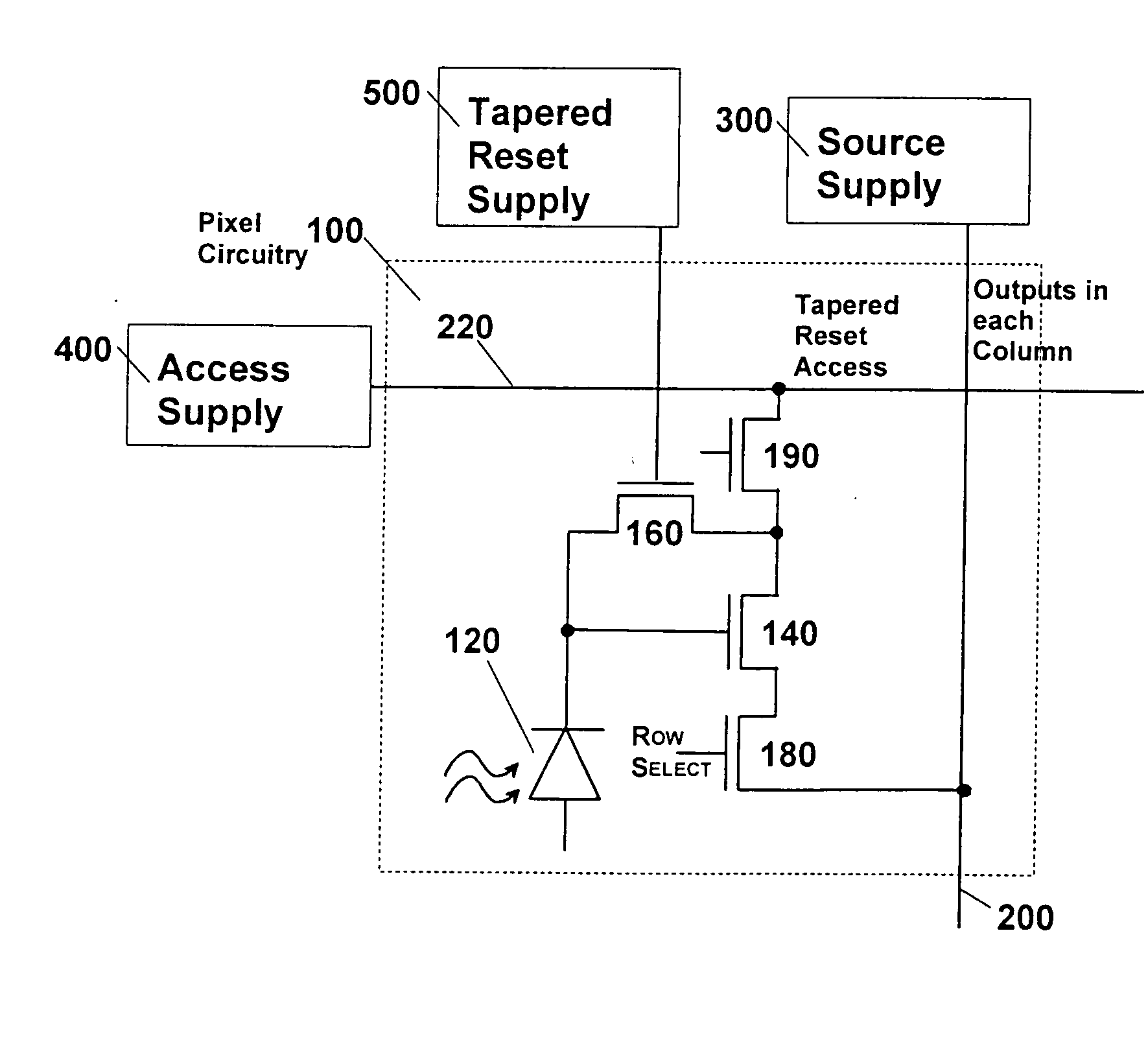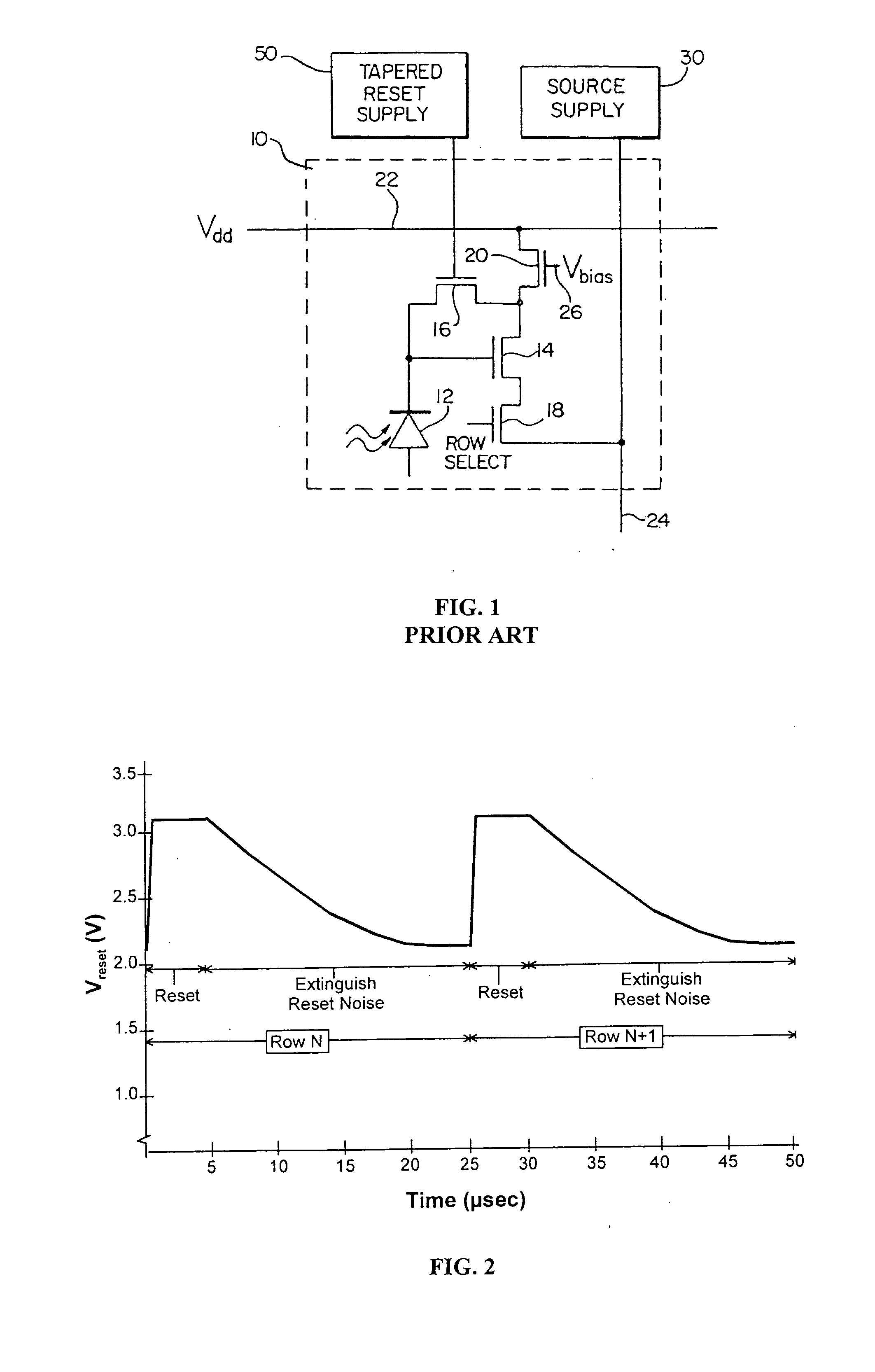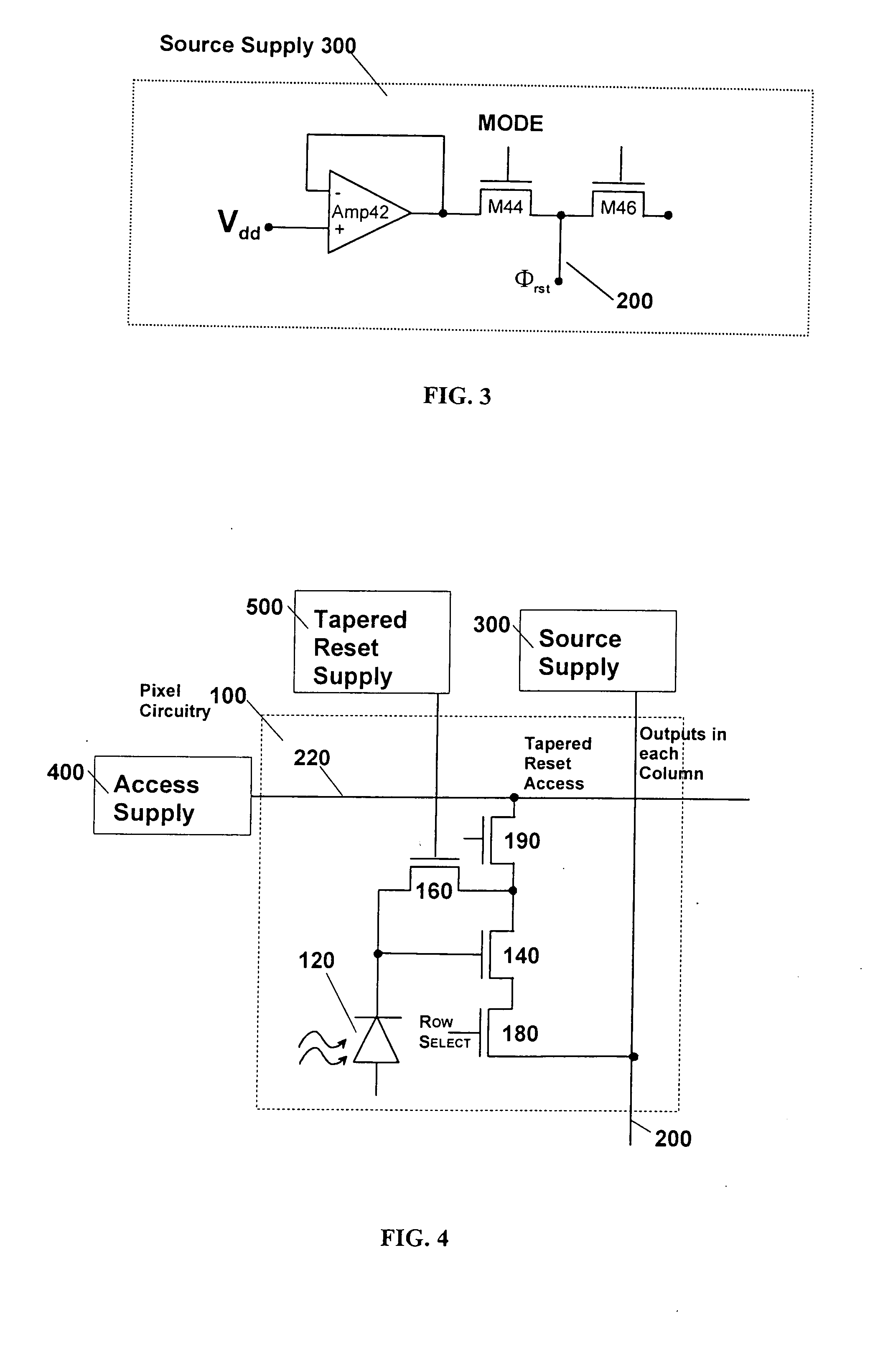Low noise CMOS amplifier for imaging sensors
a low-noise, amplifier technology, applied in the field of cmos imaging devices, can solve the problems of limiting scalability, increasing fixed pattern noise, increasing power dissipation, etc., and achieve the effect of increasing amplifier gain and low-noise amplification
- Summary
- Abstract
- Description
- Claims
- Application Information
AI Technical Summary
Benefits of technology
Problems solved by technology
Method used
Image
Examples
Embodiment Construction
[0019] The following description is provided to enable any person skilled in the art to make and use the invention and sets forth the best modes contemplated by the inventor for carrying out the invention. Various modifications, however, will remain readily apparent to those skilled in the art, since the basic principles of the present invention have been defined herein specifically to provide a low noise amplifier for CMOS image sensors. Any and all such modifications, equivalents and alternatives are intended to fall within the spirit and scope of the present invention.
[0020] The present invention has the advantages of full process compatibility with standard salicided (self-aligned silicide) submicron CMOS. This helps maximize yield and minimize die cost because the circuit complexity is distributed amongst the active-pixels and peripheral circuits, and exploits signal-processing capability inherent to CMOS. The invention's spectral response is broad from the near-ultraviolet (4...
PUM
 Login to View More
Login to View More Abstract
Description
Claims
Application Information
 Login to View More
Login to View More - R&D
- Intellectual Property
- Life Sciences
- Materials
- Tech Scout
- Unparalleled Data Quality
- Higher Quality Content
- 60% Fewer Hallucinations
Browse by: Latest US Patents, China's latest patents, Technical Efficacy Thesaurus, Application Domain, Technology Topic, Popular Technical Reports.
© 2025 PatSnap. All rights reserved.Legal|Privacy policy|Modern Slavery Act Transparency Statement|Sitemap|About US| Contact US: help@patsnap.com



